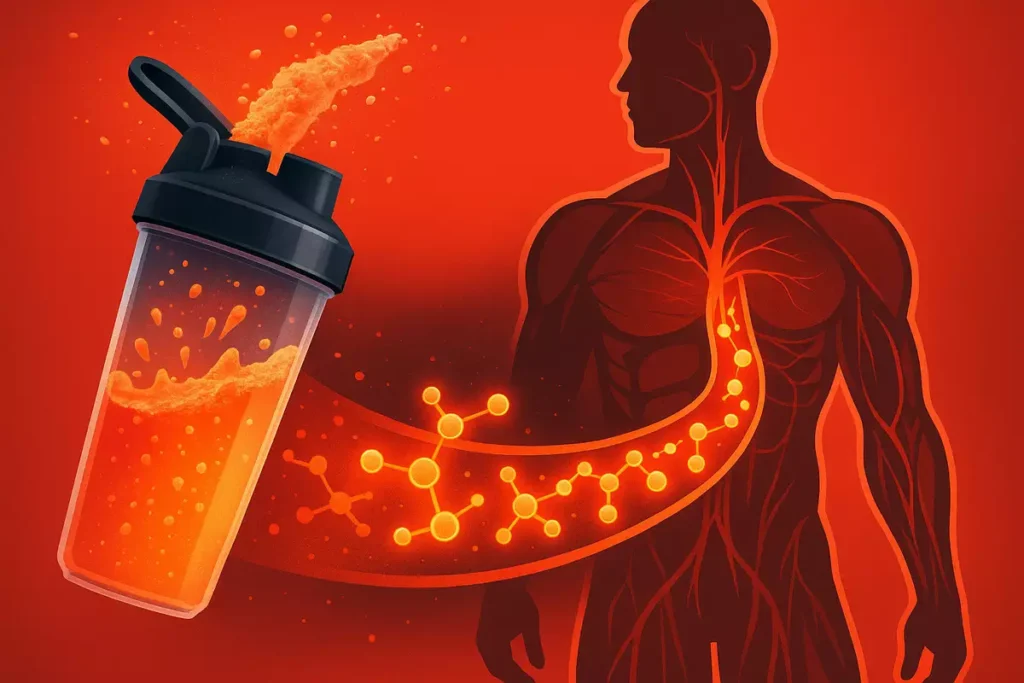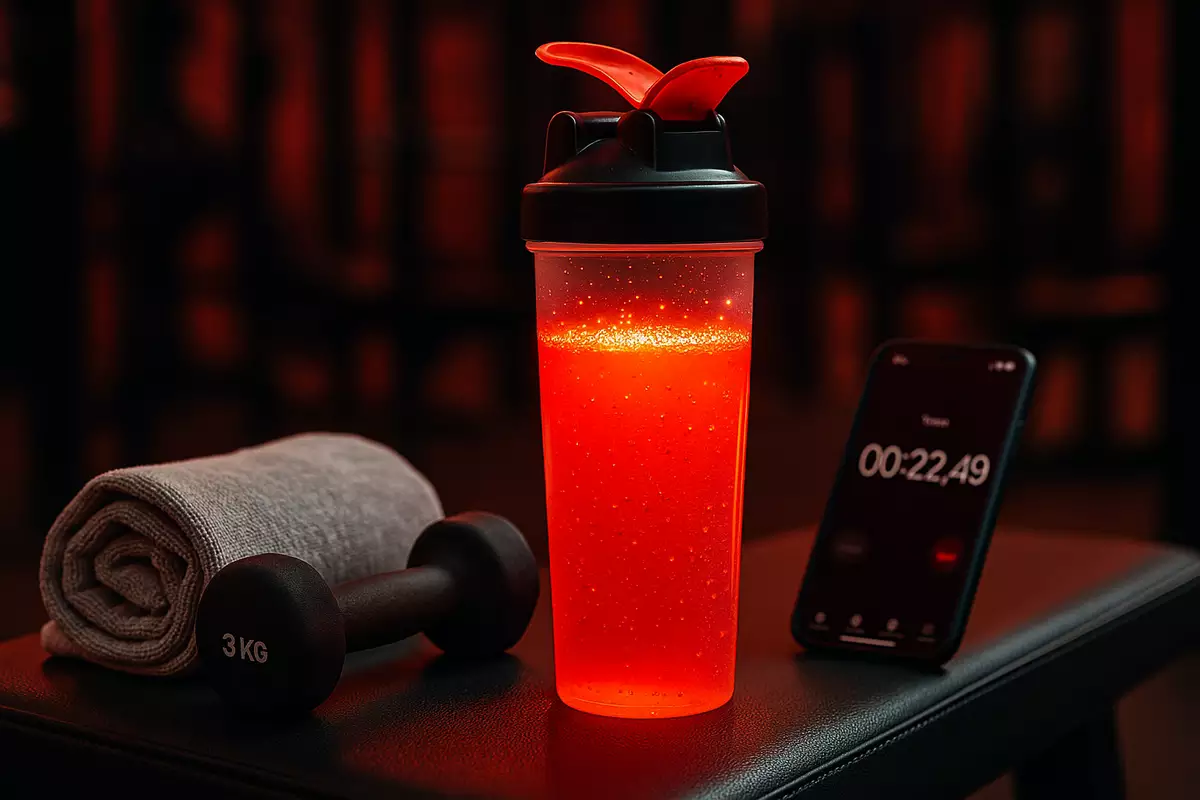Wondering how long EAAs actually stay in your system? You’re not alone—I get this question from athletes and clients all the time.
If you’re sipping on essential amino acids during training or on rest days, it’s smart to know how long they stick around and when they’re most effective.
In this guide, I’ll break it down based on science, coaching experience, and real-world results. You’ll learn what actually matters—and what doesn’t—when it comes to EAA timing and absorption.
Table of contents
Quick Answer
If you’ve ever wondered how long essential amino acids (EAAs) stay active in your body, the quick answer is: about 2 to 3 hours.
Once you drink your EAA supplement, it’s rapidly absorbed—often within 30 minutes, especially if taken on an empty stomach.
The amino acids remain elevated in your bloodstream for a couple of hours, fueling muscle repair and recovery. This short window is why EAA timing matters, especially around your training sessions.
If you want deeper insight into how to time EAAs specifically before vs during workouts, check out this detailed breakdown.
How EAAs Are Absorbed and Metabolized

Unlike whole protein sources, EAAs don’t require digestion. They go directly into your bloodstream, which means faster absorption and quicker access for muscle repair.
When you train fasted and take EAAs, your body gets an immediate supply of aminos to support recovery—without breaking down muscle tissue for fuel.
I’ve seen this firsthand during fasted morning workouts or during Ramadan training, where I relied on EAA drinks post-fast to power through late-night sessions.
Want to know how to make the most of EAAs during recovery? Don’t miss this recovery-specific guide.
Also, if hydration is your focus, learn how to create a proper EAA + electrolyte mix with this hydration mix guide.
Factors That Affect EAA Retention
How long EAAs stay in your system can vary based on a few factors:
– Fasted vs fed state
EAAs absorb faster when you’re fasted. That’s why I often use them in the morning or before a light cardio session.
– Your activity level
If you’ve trained intensely, your muscles soak them up even faster. On rest days, I still use them strategically—here’s how I do it.
– Dosage
More isn’t always better. In my experience, 6–10g per serving hits the sweet spot.
– Frequency of use
Using EAAs regularly can make your body more efficient at utilizing them—especially during cut or recomp phases.
During a five-week cutting cycle, I paused EAAs just to test the difference. Within a week, soreness lingered longer, and recovery felt sluggish.
Once I added back 7g intra-workout, my DOMS dropped and my energy returned. The difference was crystal clear.
When to Take EAAs for Maximum Impact

Here’s a simple breakdown of EAA timing based on real-world use:
– Pre-Workout
Helpful if you train fasted or haven’t eaten in 2–3 hours. It gives you a clean energy boost and prevents muscle breakdown.
– Intra-Workout
This is my go-to. EAAs taken during training keep endurance steady, improve focus, and delay fatigue—especially for long hypertrophy sessions.
– Post-Workout
If you can’t eat right away, EAAs help bridge the gap and support faster recovery.
One of my clients, Thomas from Belgium, began adding 5g EAAs and 5g creatine to his morning shake. After a week, he noticed less fatigue, better pumps, and even hit a PR on deadlifts.
Want to explore which timing works best for your body and routine? Dive into the full comparison here.
Do EAAs Build Up in Your System Over Time?
No—EAAs don’t accumulate in your system like creatine. Your body uses what it needs, and the rest gets flushed out.
But when you use them consistently, you support a steady stream of amino acids for muscle protein synthesis—especially when calories are low.
Think of EAAs like daily fuel for recovery, especially during calorie restriction or intense training. Just don’t expect them to build up over time like a loading phase.
Real-World Tips for EAA Timing and Dosing

Here’s how I personally use EAAs—and how I recommend them to my clients:
– During cutting or morning training
I take 6–8g EAAs during training. It makes a huge difference in energy and recovery.
– On rest days
I mix 5g EAAs with lemon water and a pinch of sea salt. It’s a clean way to stay anabolic during longer fasting windows. Full strategy here.
– During bulking
I stack EAAs with creatine and a small carb source. This combo gives a better pump, faster delivery, and enhanced recovery.
One of my clients, Lisa from Sweden, trained fasted in the mornings. She was constantly crashing by noon. After introducing 6g EAAs intra-workout, her energy stayed up—and she even reduced her coffee intake.
Looking for a clean EAA product without junk? Check out my top picks for EAAs without artificial sweeteners or EAAs with no fillers.
If you’re vegan or working with plant-based diets, here’s how to use EAAs for vegan muscle growth effectively.
Final Thoughts: What Matters Most
You don’t need to obsess over the exact half-life of EAAs. What really matters is consistent, smart usage.
From years of coaching and testing, I can confidently say that EAAs are worth it—especially during cutting, fasted training, or high-intensity sessions.
They’re quick to absorb, light on the stomach, and deliver real benefits when timed right.
Stick to 6–10g per session. Use them around your workouts. And pay attention to how your body responds.
Supplements don’t replace smart training or a solid diet—but they can give you the edge when it counts.



Leave a Reply